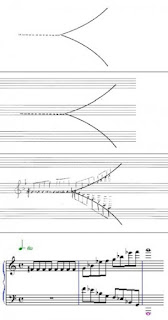Several large experimental groups are hot on the trail of this elusive subatomic particle which is thought to explain the origins of particle mass. Higgs Update Today
What use the Higg's Mechanism?
Just as one might look at GRB examples of motivation that come to us in natural cosmic particle collisions, by looking back in time is it not to strange to wonder how such compositions are given to the contacts and explorations of where any beginnings may materialize. So we are given clues?
The structure is being detail as if in association to identifying the elements in between Mendeleev's elemental table components? Seaborg's octaves? It is an analogy in comparison as you might track LHC components of particle expressions?
| this increases his resistance to movement, in other words, he acquires mass, just like a particle moving through the Higgs field |
Latest research can pinpoint what I am saying yet it is through such expressions we might ask how is it an Einstein crossing the room can gather so many minds and ideas to it? Can we say then that consciousness is much the same, yet, it isn't the idea of a heat death that such notions are not palatable with what happens in the brain but the idea that new ideas can enter. You see?
See Also:
















